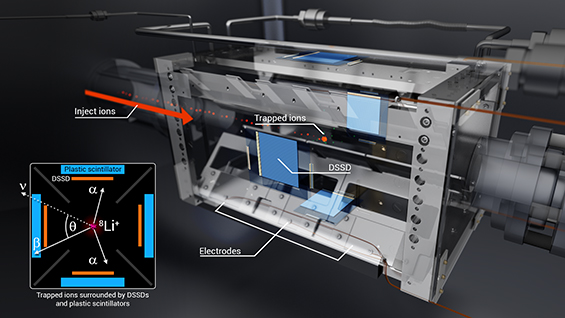
Polarized Partners: Spinning Electrons Yield Spinning Positrons
Researchers demonstrate a new technique for producing polarized positrons that could improve manufacturing and lead to new discoveries.

Researchers demonstrate a new technique for producing polarized positrons that could improve manufacturing and lead to new discoveries.

A new method detects residual contaminants in ultra-pure helium gas, critical to nuclear physics experiments.

Studies of the neutrinos emitted in the radioactive decay of nuclei held in an ion trap allow sensitive searches for new interactions.

Team’s approach enables a highly sensitive search for a neutron electric dipole moment, which provides insights into the nature of the universe.

Using fast particles to probe hot matter in nuclear collisions.

New data that "wimpy" gluons, the glue-like particles that bind quarks within protons, have a big impact on proton spin.

Cutting-edge experiment with a beam of radioactive barium ions provides direct evidence of nuclear pear-shape deformation.

Using tools that enable nuclear physics research into the heart of matter, scientists created a material for applications from aerospace to solar panels.

The neutron skin of the nucleus calcium-48 is much thinner than previously thought.

Antiproton pairs generated in high-energy heavy-ion collisions interact with a strong attractive force.

Nuclear physicists colliding football- and sphere-shaped ions discover evidence supporting a paradigm shift in the birth of the quark-gluon plasma.

Indirect method let scientists determine stellar reaction rates, providing detailed information about the universe.
Signup for the Office of Science’s GovDelivery email service, and check the box for the Nuclear Physics Program in your subscriber preferences.
Subscribe